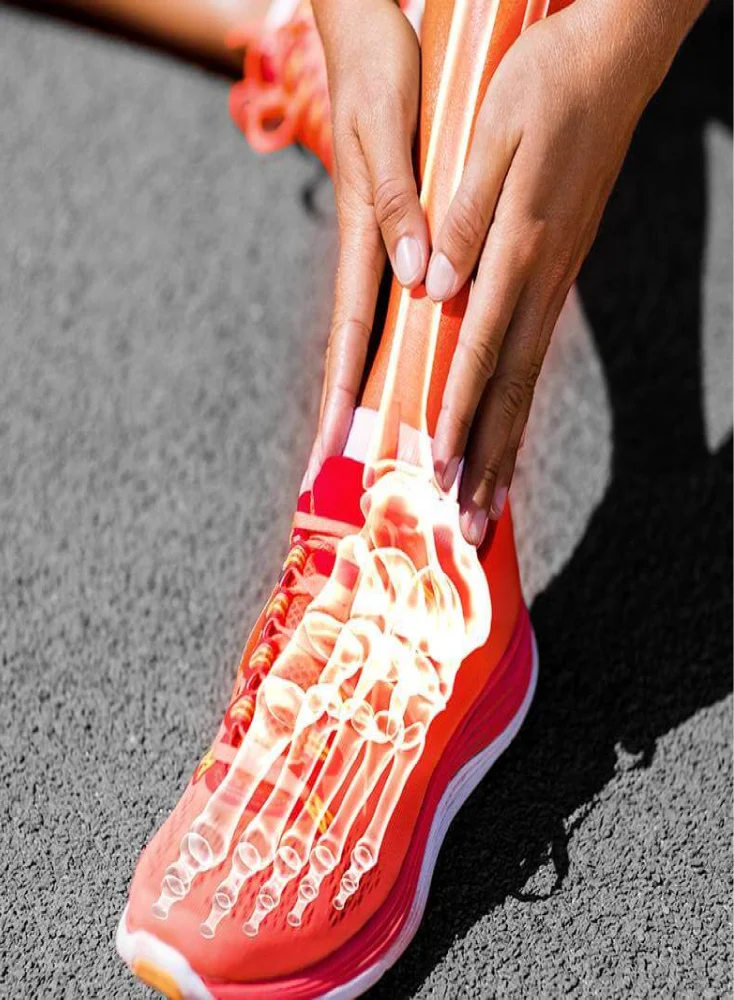
Athletics
How To Prevent Sports And Training Injuries
A sports, or training, injury can be a huge setback on your training journey and could see you out of action for weeks or even months in extreme cases. So how do you minimise the risk of such injuries?
1 min read
Published on
April 23, 2019
Written by
EDGE
Share this article
We spoke to Jo Meek, Team GB ultra-runner and physiotherapist, on how to ensure you avoid injury.
We all dread getting a serious niggle, or injury, especially if it means we have to stop training, or, worse still, fail to compete in a race we’ve been planning for months. With the right approach to your training, however, injuries can be avoided. It might mean a change in your mindset, though.
“‘What you put in you get out’…everyone has heard of this expression and it’s no different to sporting performance,” says Team GB ultra-runner and physiotherapist, Jo Meek. “The ability to train and compete isn’t a right and owned, it’s a privilege and has to be earnt. This will never be a truer statement than for those that have experienced being injured. What you need to focus on now isn’t your training that you have scheduled, but the training you usually forget to find time for.”
STRENGTH WORK
Jo believes strength work is fundamental to injury prevention. “I’m not talking about strength work to get bigger muscles, I’m talking about strength work that enhances performance.”
This strength work will improve your biomechanical efficiency, as it will mean you don’t have any areas that are not pulling their weight. It will mean your tendons are loaded regularly so they don’t complain. And it will result in less injuries.
If you look at the discipline of running, it’s a series of single leg squats. “Can you do a single leg squat properly?” asks Jo. “Does your quadriceps and gluteal strength allow you to descend and ascend without your knee tracking over your toes? Does your neuromuscular strength allow you to balance so your ankle isn’t vulnerable? How many can you do? Remember, on every run you do thousands of these.”
If you start with these questions, and your answers, you will realise that some very simple exercises can help you stay injury free. A strengthening programme can be done at home without any equipment twice a week to start and then just once a week to maintain. “Find three or four exercises and create a circuit,” suggests Jo. “Play some music and get squatting, lunging, deadlifting, crunching, and pushing!”
MAINTENANCE WORK
Looking after your body can only be a benefit. Taking time, little and often – or perhaps one longer session a week – to stretch and use a foam roller helps to keep the muscles and fascia supple. “Start at your feet and work up through the calves, quads, hamstrings, glutes to your lower back,” says Jo. “Use a ball under the feet to really tackle the fascia. Yes, it can be sore initially but be patient, take your time and slowly allow your tissues to respond.”
CROSS TRAINING
Cross training is usually something that is done when injury strikes but it has its benefits throughout the year. It allows for a different stimulus and targets the muscles to work in a different way. “It also delivers a decent cardio vascular workout, but with less physical impact on the body,” adds Jo. “You get both an upper body and lower body challenge, as well as variation in training so you and your body don’t get stale.”
WARMING UP
If you are serious about preventing injury, you will need to start incorporating a warm-up in to your training session. Before any type of exercise and loading, a warm up is essential.
Start with continuous movement (for example, jogging) and progress to more dynamic fast-moving drills to allow you to prepare your muscles and joints for what it to come. “It will also improve body awareness by firing up the neuromuscular system (i.e. balance),” says Jo, “as well as focusing your mind on what you would like the outcome of your training session to be.”
Cooling down afterwards also allows you to bring your body back to a state of rest more gently and creates time to congratulate and be thankful for another session nailed!
WARNING SIGNS
If you do find you have a niggle, and it looks like it’s becoming more persistent, don’t ignore it. Jo advises you: “Talk to friends/ family/ training partners about it and acknowledge it. By facing up to a niggle early on and addressing the issue you could be saving yourself from enforced time out. Get assessed by seeking out a specialist, such as a sports physiotherapist, and get it diagnosed and treated.”
It’s all too easy to say you don’t have time for any of the above, but if you don’t make time you’ll probably find yourself on the injury bench, and no one wants that. By following these simple guidelines, and looking after yourself, Jo believes you will sail through your training happy!
Get 10% off your first order
Want regular tips on how to make the most of your results? Join our newsletter and we'll give you 10% off your order!